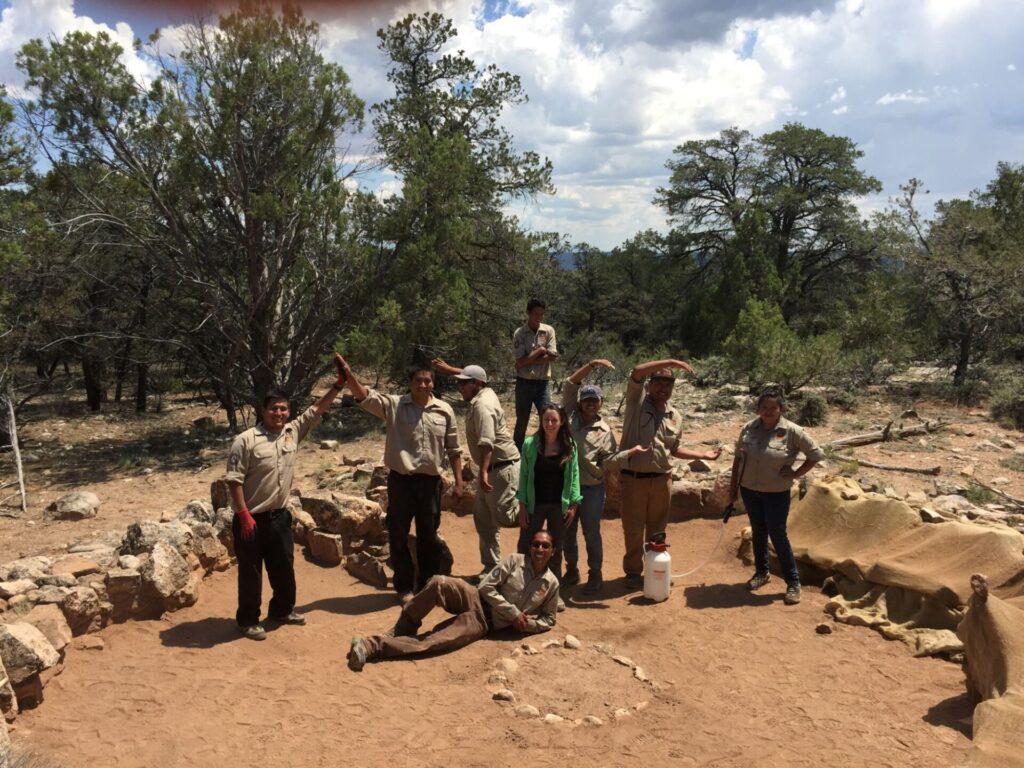- Home
- >
- Preservation Archaeology Blog
- >
- Trail Memories
(November 20, 2025)—For many alumni of a conservation corps or a land-management agency, trails make up a large part of your life. At least for me they did—and in some ways, still do.
Over the years, I have built trails from start to completion. I have performed maintenance and installed various structures on all types of trails. I have done this by hand tool, power tool, small explosives, various off-highway vehicles, and bulldozer. I’ve done this with 8-person crews, 2-person crews, and sometimes solo. I’ve done this with mules, donkeys, and horses.
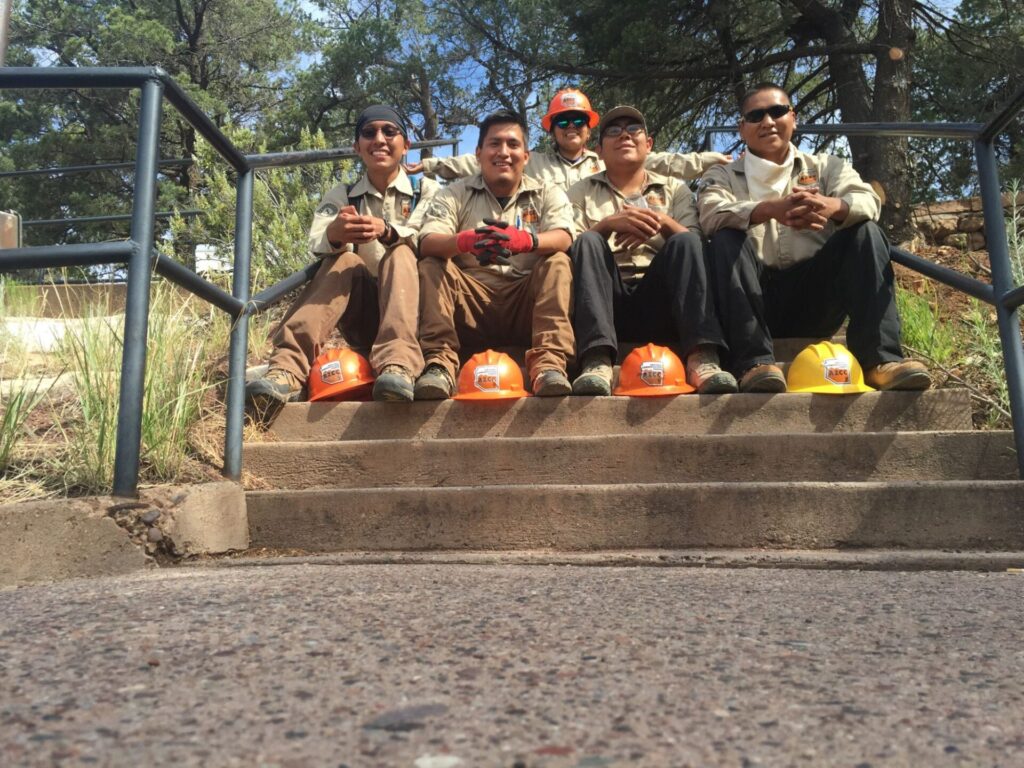
I’ve done this from the southern Sonoran Desert, the Mogollon Rim, the San Francisco Peaks, the Grand Canyon, the Kaibab National Forest, all the way up to the Grand Mesa, Uncompahgre, and Gunnison National Forests of Colorado’s Western Slope.
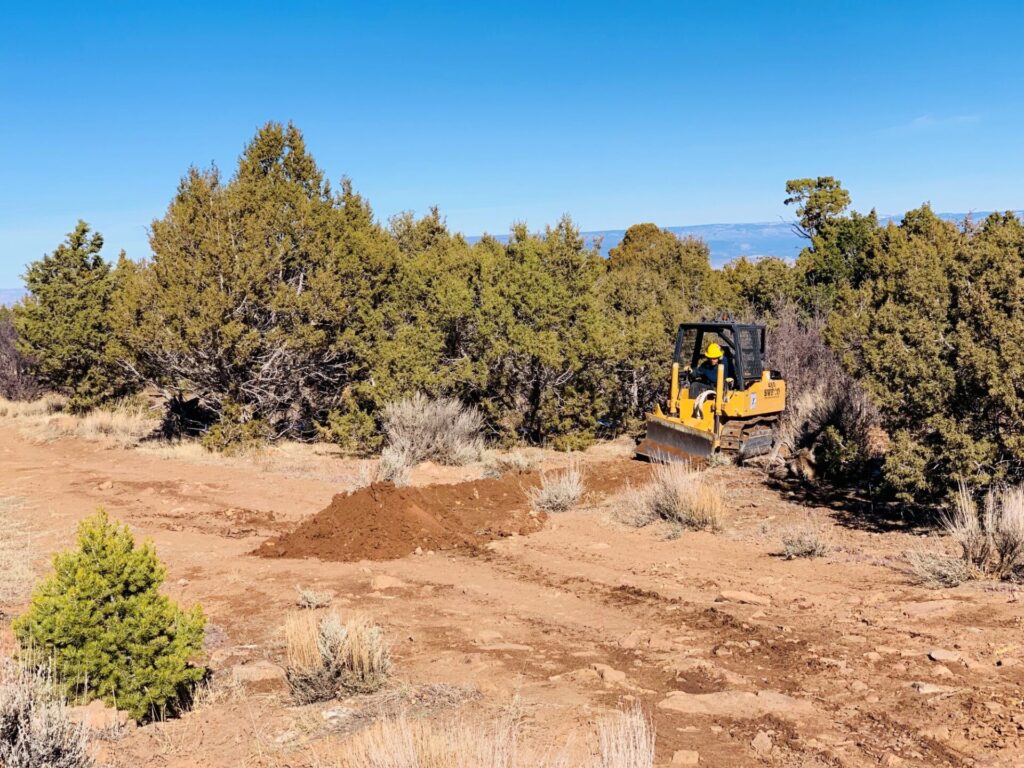
I’ve done this in 115 degrees, in 30 degrees, in rain, sleet, hail, and snow. The exception is lightning storms (per policy).

One thing I can say about building and taking care of trails: It is dirty, gritty, painful, dangerous work that will give you a sense of gratification in a way few other things can. There is a certain sense of accomplishment when you tool up at the end of the day, count paces on your way back to the start of the day, and look back at a section of trail that was in bad need of maintenance or didn’t exist that morning. You can say “I helped do that,” and you will have the best sleep possible on an inch-thick foam mat.
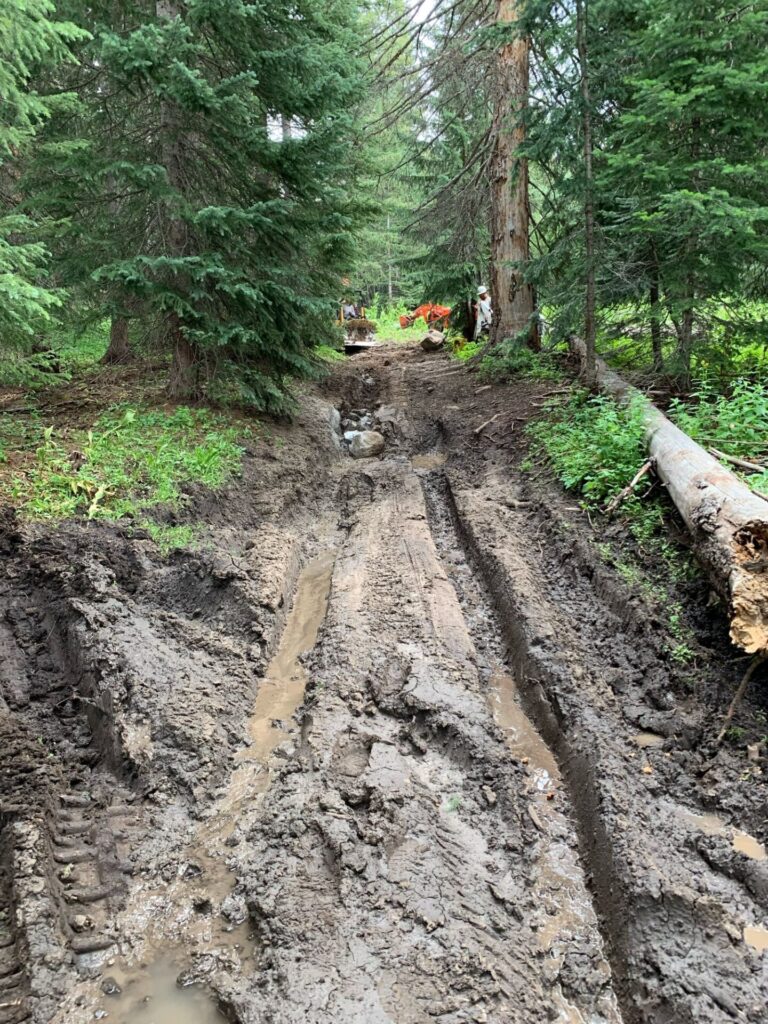
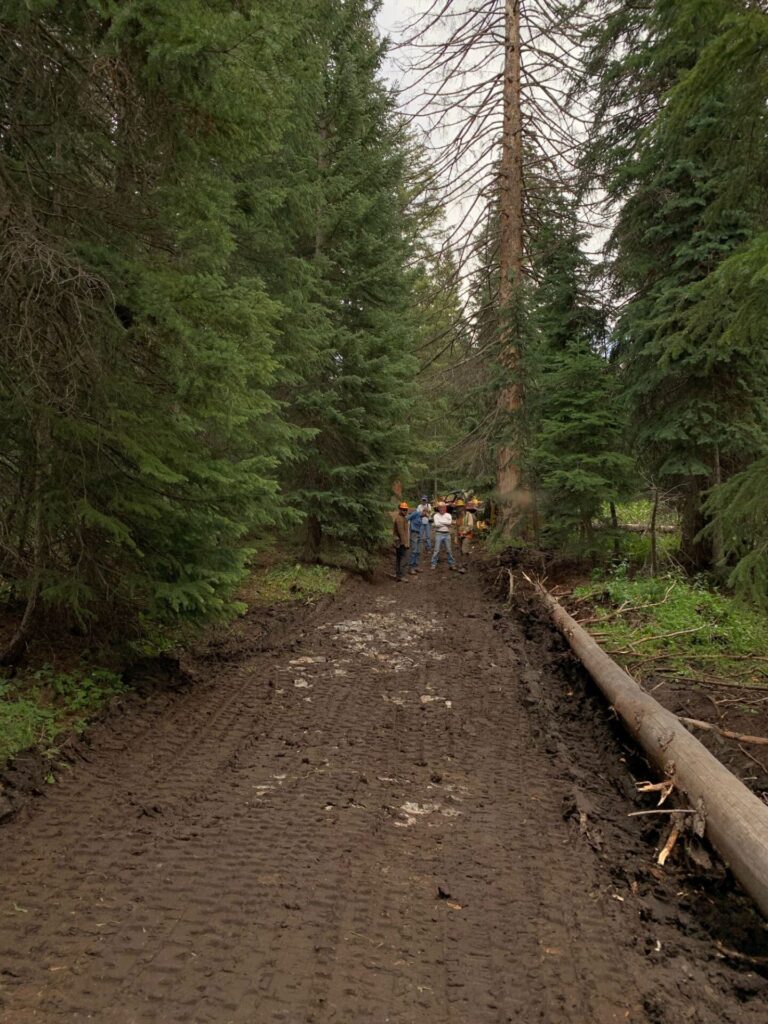
A favorite trail memory of mine happened on the North Rim of the Grand Canyon on a trail that followed the rim. It hadn’t seen cyclical maintenance in at least a few years. There were sections where we couldn’t even see the tread (the part you walk on). Cyclical maintenance is things like removing overgrown vegetation, re-establishing tread to mineral soil, clearing out drains, removing fallen trees, removing rocks that a hiker could easily roll an ankle on, and opening the corridor (the space on either side and above the tread). Sometimes it also includes repairing structures like water bars or steps made from local rock or logs. Essentially, you want to make the trail safe for users, and you want the work to be of a quality that it doesn’t need to be done for another two years at least.
This particular trail was a hiking and equestrian trail. With an equestrian trail, the corridor should be cleared at least 2 or 3 feet on either side of the trail and above such that “a tall man wearing a tall hat riding a tall horse” can ride under overhead vegetation. I usually took that to mean about 15 feet or so. And so, my crew and I started this task.
The tread was completely overgrown with grass in some sections. Removing it felt like pulling up a carpet that was a mile long. The corridor was so crowded you couldn’t walk the trail without getting torn up by Catclaw Acacia. There wasn’t much need for rock work because it was a flat trail, and only here and there was there a water bar or drain to clear out or install. The work took a few hitches, which for us was 8 days working with 6 days off in-between.
It was a real slog—tedious and monotonous. We played word games like “Contact” or “Man or Monster?” to pass the time. On days when morale was low, I would break out a “secret snack” which was usually something like chocolate chip cookies to lift spirits. Countless stories were told and sometimes an hour went by silently. I allowed my crew members to listen to music in one ear for a balance of sanity and safety. Eventually, we completed the trail. I cannot tell you how great it felt to drive away from the trailhead that day. I took my crew to the Grand Canyon Lodge to get some celebratory snacks and drinks.
Some weeks later, lightning struck below the rim of the canyon and started a fire. The fire traveled up the canyon and started to spread on the rim toward the trail we had opened up. We didn’t know it at the time, but the fire came up to that trail and could not jump the corridor to the other side. Our project partner with the park came up to us one day and said you should drive out there and take a look at what happened. We drove out there and pulled into the trailhead. We got out and walked across the road to the trail. Towards the rim it was scorched earth, completely black and grey. Almost nothing hadn’t burned. And on the other side the forest was completely intact.
I remember feeling a mix of emotions. On one hand a great deal of our work had literally gone up in flames, but on the other, who knows how many acres of forest had our work saved?
Like I said, building and taking care of trails is hard work. It is either something you fall in love with or something you never want to do again. The first few weeks for a person new to it are a crucible. That’s when you figure out if you can sleep, work, cook, clean, go without a shower, and dig a cathole for 8 days at a time. For those who stick around, like me, you have to connect this work to something deeper.
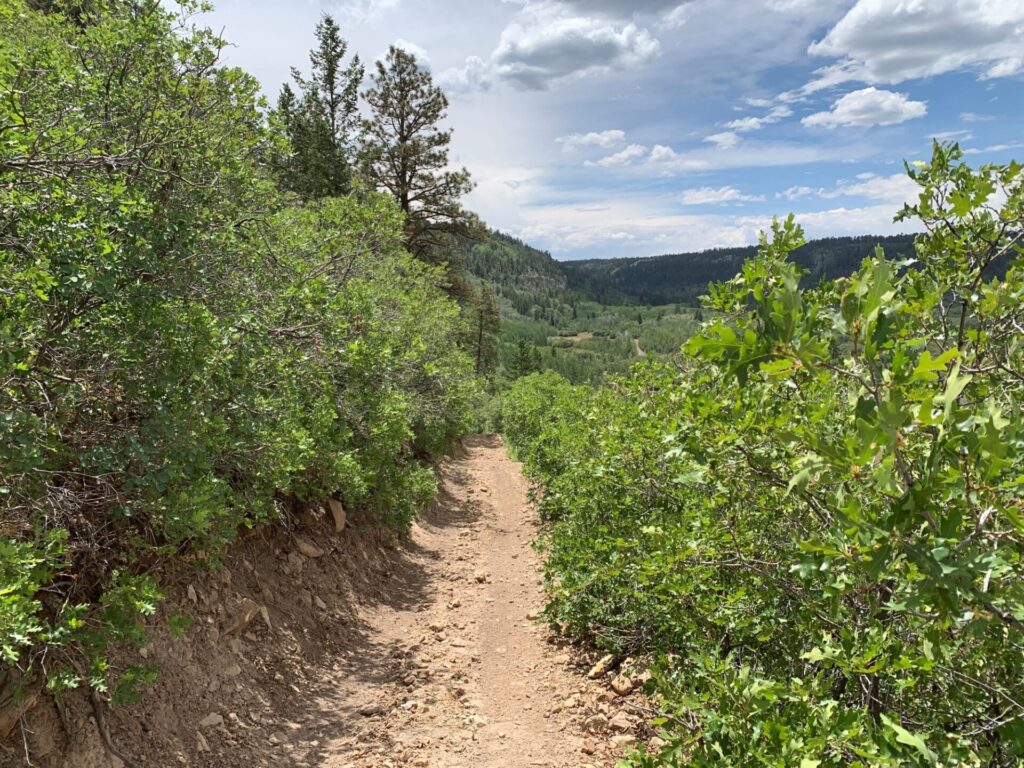
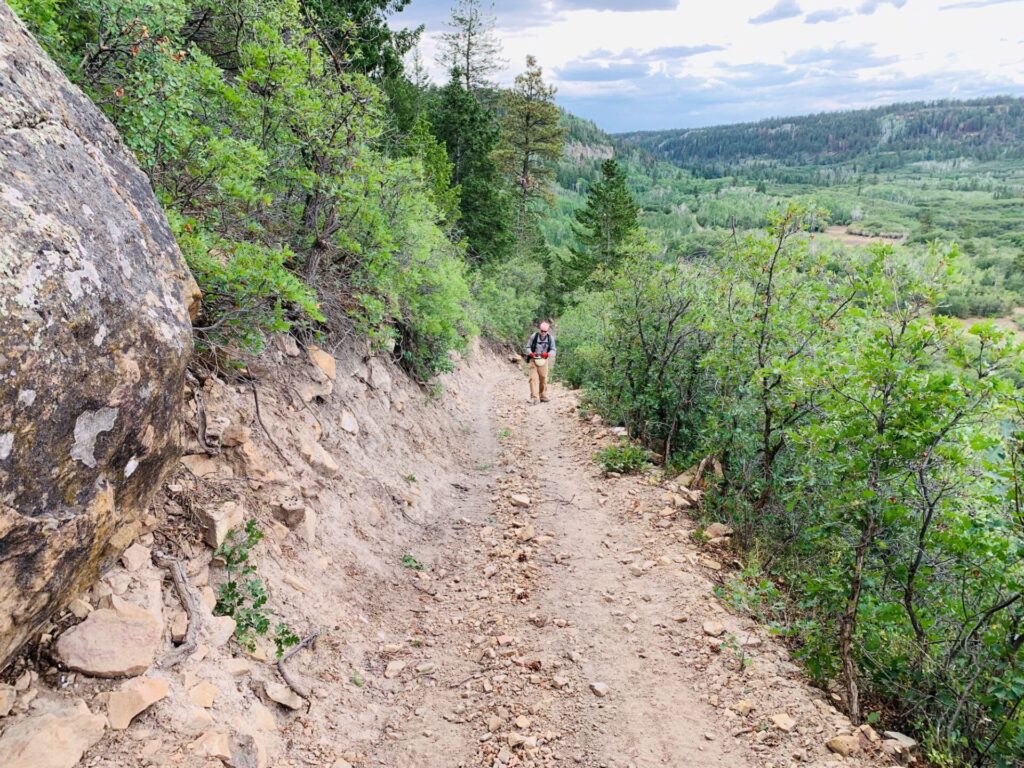
For me, trails are not just something to get you from here to there. To me, they represent stewardship of the land. To me trails mean callused hands, a strong back, a will to get it done, and the having the skills to do so safely. To me they represent 8 Indigenous youth spending a summer together on their ancestral homelands learning the reality of taking care of it. Trails to me mean not being able to walk one without thinking “I can fix that.” Trails mean walking in the footsteps of our Ancestors, and caring for trails means ensuring those to come can walk in ours.
A final thought: If you ever find yourself struggling up a steep stone staircase, just think about the person who built it!
Give today and bring us one step closer to better protections
